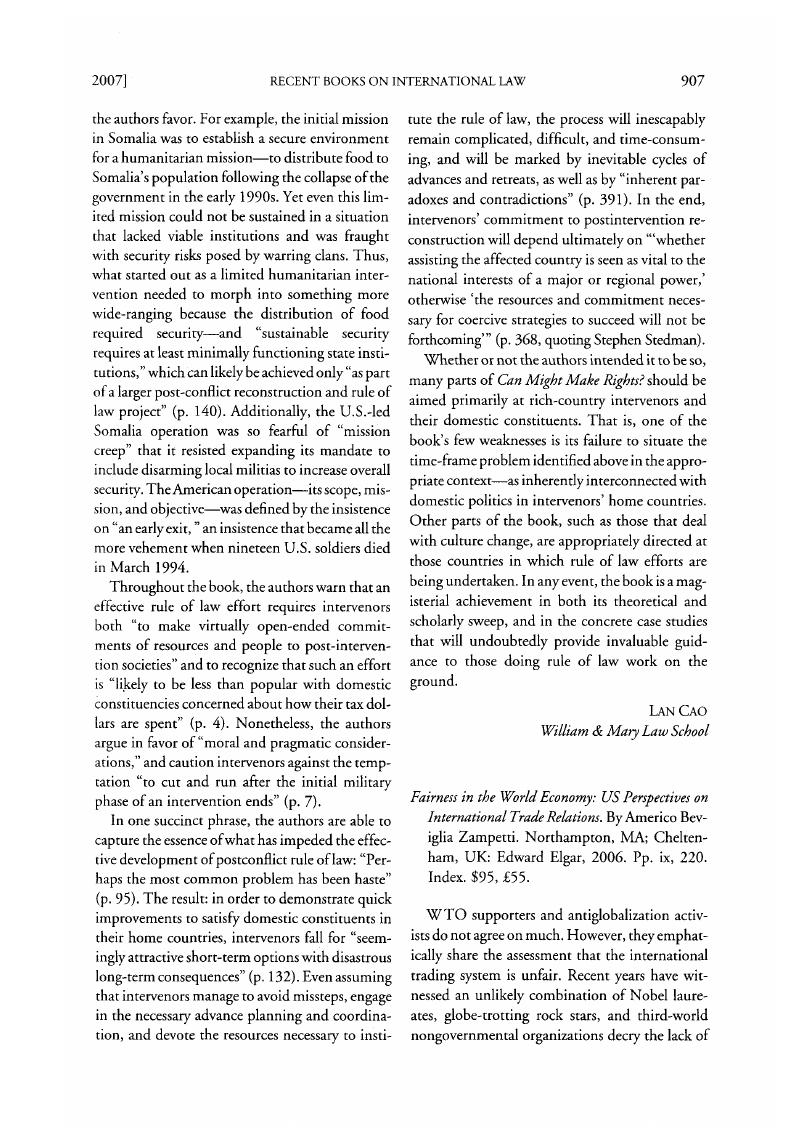No CrossRef data available.
Published online by Cambridge University Press: 27 February 2017

1 See, e.g., Joseph, E. Stiglitz & Andrew, Charlton, Fair Trade for All: How Trade Can Promote Development (2005).Google Scholar
2 See, e.g., Jagdish, Bhagwati, Fair Trade, Reciprocity and Harmonization: The New Challenge to the Theory and Policy of Free Trade, in Analytical and Negotiating Issues in the Global Trading System 548 (Alan, Deardorff & Robert, M. Stern eds., 1994).Google Scholar
3 See, e.g., Robert, E. Hudec, Mirror, Mirror, on the Wall: The Concept of Fairness in United States Trade Policy, in Canada, Japan, and International Law: Proceedings of the 1990 Conference of the Canadian Council on International Law 88 (1990)Google Scholar; Kenneth, W. Abbott, Defensive Unfairness: The Normative Structure of Section 301, in 2 Fair Trade and Harmonization 415 (Jagdish, Bhagwati & Robert, E. Hudec eds., 1997).Google Scholar
4 The classic book-length treatment of the debate over S&D treatment remains Robert, E. Hudec, Developing Countries and the Gatt System (1987).Google Scholar
5 A summary of the empirical evidence on the effects of preference programs can be found in Jeffrey, L. Dunoff, Dysfunction, Diversion and the Debate over Preferences: (How) Do Preferential Trade Policies Work? in Essays on Developing Countries in the WTO Legal System (Chantal, Thomas & Joel, Trachtman eds., forthcoming).Google Scholar
6 Judith, Goldstein, Ideas, Interests, and American Trade Policy (1993)Google Scholar; Peter, Hall, The Political Power of Economic Ideas (1989)Google Scholar; Ideas and Foreign Policy (Robert, O. Keohane & Judith, Goldstein eds., 1993).Google Scholar
7 See John, Ruggie, International Regimes, Transactions, and Change: Embedded Liberalism and the Postwar Economic Order, 36 Int’l ORG. 379 (1983).Google Scholar For uses of Ruggie’s analysis in the legal literature, see Andrew, T.F. Lang, Reconstructing Embedded Liberalism: John Gerard Ruggie and Constructivist Approaches to the Study of the International Trade Regime, 9 J. Int’l Econ. L. 81 (2006)Google Scholar; Robert, Howse, From Politics to Technocracy—and Back Again: The Fate of the Multilateral Trading Regime, 96 AJIL 94 (2002)Google Scholar; Jeffrey, L. Dunoff, The Death of the Trade Regime, 10 Eur. J. Int’l L. 733 (1999).Google Scholar
8 For influential versions of this account, see, for example, Destler, I. M., American Trade Politics (4th ed. 2005)Google Scholar; E. E. Schattschneider, Politics, Pressure, and the Tariff (1935). The conventional wisdom that Congress is more susceptible than the president to be captured by protectionist interests has come under challenge in recent years. See, e.g., Jide, Nzelibe, The Fable of the Nationalist President and the Parochial Congress, 53 UCLAL. Rev. 1217 (2006)Google Scholar; Michael, J. Hiscox, The Magic Bullet? The RTAA, Institutional Reform, and Trade Liberalization, 53 Int’l ORG. 669, 677 (1999).Google Scholar
9 Robert, E. Hudec, Differences in National Environmental Standards: The Level Playing Field Dimension, 5 Minn. J. Global Trade 1 (1996).Google Scholar
10 This argument is developed in Brian, Langille, General Reflections on the Relationship of Trade and Labour (Or: Fair Trade Ls Free Trade’s Destiny), in 2 Fair Trade and Harmonization 254 (Jagdish, Bhagwati & Robert, E. Hudec eds., 1997).Google Scholar
11 Daniel, Tarullo, Beyond Normalcy in the Regulation of International Trade, 100 Harv. L. Rev. 546 (1987)Google Scholar; Joel, Paul, Free Trade, Regulatory Competition and the Autonomous Market Fallacy, 1 Colum. J. Eur. L. 29 (1995).Google Scholar
12 World Commission on the Social Dimensions of Globalization, A Fair Globalization: Creating Opportunities for all 2 (2004).